! ! WARNING ! !
Above is Zulu Time!!
Reciprocating engine.
Mainly you could state that there are seven basic parts, witch are:
1.cylinders
2.pistons
3.connecting rods
4.crankshaft
5.valves
6.spark plugs
7.cam shaft
Description of operation:
On top of the engine are the valves located for intake or exhaust gases. At the beginning of each cycle the intake valve opens, at the same moment the piston is moving downwards inside the cylinder creating a sort of vacuum inside. A mixture of fuel with air is hereby sucked in the cylinder. The piston has two
“max point”. At these points the piston will stay at the same spot for a brief moment, because the crankshaft is at his lowest or highest point. At the same moment the intake valve closes and the crankshaft moves towards its upper max point. The piston starts to compress the gas mixture. When he is at his upper max point the piston haze come to its maximum compression. At that moment the spark plug ignites causing the compressed gas to expand forcing the piston down. The crankshaft is in the meantime moved past its upper max point. By the expansion of the gas the crankshaft is also pushed down at a high speed, here kinetic energy is produced ! This is also known as “the power cycle”. Of the four cycles, there is only one cycle producing power we cane use. Anyway, while the crankshaft passes his max lower point, a link that connects the crankshaft and the cam shaft moves the second one mentioned and opens at that moment the exhaust valve. The piston witch is at the same moment moving upwards pushes the burned gases outside. Once the piston haze reached his max upper point the intake valve opens and te exhaust valve closes and again we are back where we started.
Ok? Easy enough! But were in heavens name came the name “horse power” from?
Ok. Listen’ up, as always the names we use came from peoples or events from a distend past. The same here, Sir James Watt, the gentleman with his steam engine wanted to be able to state how strong his engine was. The only strong thing they had during that time was……………….a horse! So with the use of a cable system and some weights he determined that: a horse could lift 550 pounds or 249.48 kilograms one foot in one second. Multiply by 60 = 33000 foot-pounds per minute {550x60} . And there you go! Horsepower was born!
Reciprocating engines are in different types as follows :
1.Single row with the centerlines of the cylinders vertical or “inline engine”.
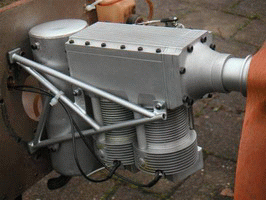
2.Double row with the centerlines of the cylinders in a “V shape” also V-engine called.
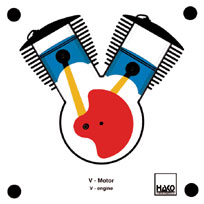
3.This V-engine exists also in a double version this is called a “W-engine”.
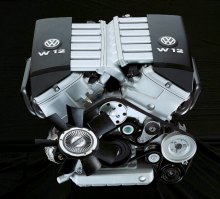
4.The single row engine also exists in a double version mounted opposite of each other, known as a “Boxer engine” as in a VW Beetle and a Porsche of course!
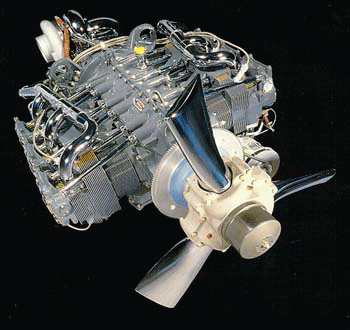
5.And last but not least, the “Radial” engine, which today is still very popular ! This engine consist of a series of cylinders mounted next to each other creating a disc or round engine also known as a “Star-engine”, inside the engine there is one main connecting rod which, the other rods connect to.
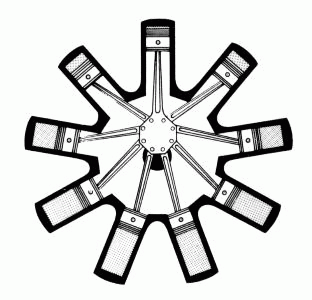 |
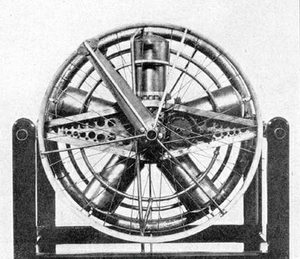 |
During the first World War there was some kind of an engine called “Rotary-radial engine”, the opposite work principal of the above mentioned engines. Here the engine it self turned and the pistons stood still. Due to the big problems in relation to the mechanics the engine existents was doomed to fail. Bye-bye perfect power-to-weight ratio, pity ! Excessive heat needs to be drained, because this is bad for the engine life-time. The oil inside of the engine will burn up due to the high heat causing the surfaces of the cylinder and the pistons to rub causing the engine to jam-up, and this is not what we desire !
Article last modified on 10/06/2015

|

|
|
(c) 2004 www.simbuilder.be Created by See3D.be |
||


